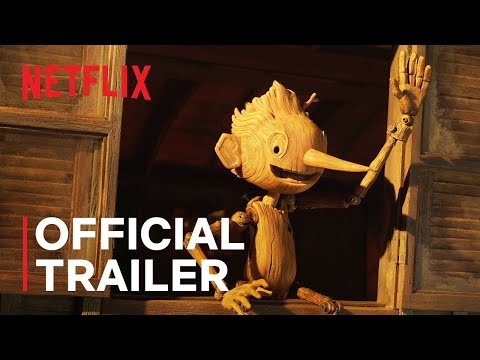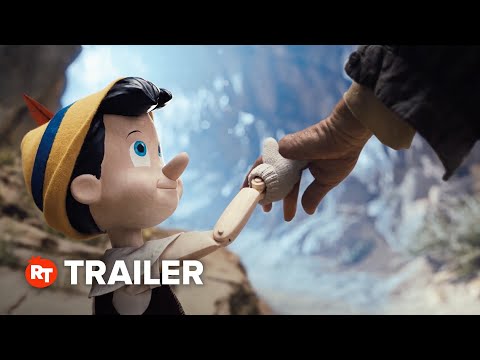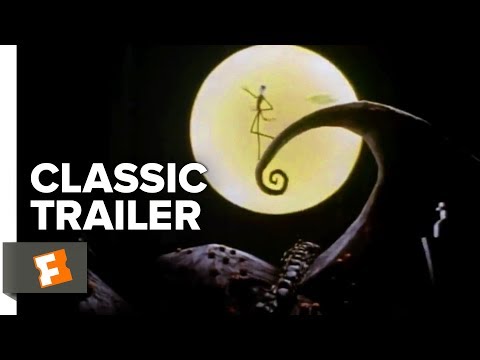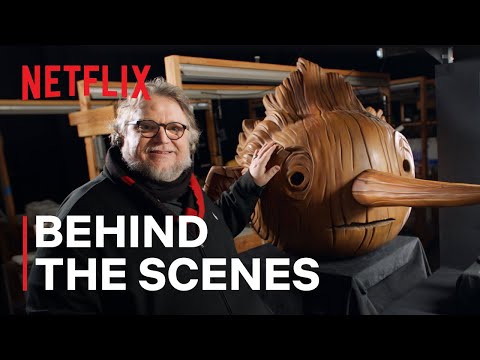The little wooden puppet who longs to be a real boy is having quite the movie year.
Based on Carlo Collodi’s 1883 novel, the character has been reborn in the form of two lavish, state of the art 2022 films from distinguished directors. In the hands of Robert Zemeckis, his “Pinocchio” (on Disney +) was a live-action, mostly faithful adaptation of the classic 1940 Disney animated film.
A very different take on the character emerges as “Guillermo del Toro’s Pinocchio” (on Netflix) is an expectedly quirky and dark stop-motion animated film.

First the bad news: Zemeckis’ film is indigestible and somehow even worse than his recent botch of “The Witches” (2020).
Some directors have flourished when connecting with the ongoing progress of computer-generated imagery and its possibilities; with Zemeckis, the early triumphs of “Who Framed Roger Rabbit” (1988), “Forrest Gump” (1994) and “Contact” (1997) led to the experimental and mostly successful “The Polar Express” (1994).
Sporting a desire for digital realism, 3-D enhancement and the latest in visual effects technology, Zemeckis’ commitment to CGI-powered filmmaking is nearly on par with James Cameron.
Sadly, only his recent “Flight” (2012) is worthy of his earlier body of work. The rest of his recent output, including “A Christmas Carol” (2009) and “The Walk” (2015) sport impressive but obvious CGI and lackluster screenplays (I have yet to see “Welcome to Marwen”).
Zemeckis’ insistence on the best special effects possible is pointless if the script is awful.

Take his “Pinocchio,” with its elaborate, endless stream of CGI characters and visual from the very start – yes, Jiminy Cricket is now composed of pixels, but the effect is not the same.
The cricket now resembles an action figure and is nowhere near as adorable as his former cartoon form. In fact, the character’s recent appearance in “Puss in Boots: The Last Wish” is preferable.
The story is mostly the same, with Tom Hanks as the fatherless carpenter who creates the puppet Pinocchio, which the Blue Fairy (Cynthia Erivo) brings to life. The arrival at Pleasure Island and the climactic battle with Monstro are intact. New additions include a pile of excrement that Pinocchio inspects, a reference to Chris Pine(!) and Hanks singing about “pizza pie.”
It turns out Zemeckis only looked good for the project on paper and is actually as wrong for the material as Tim Burton was for the similarly doomed “Dumbo.”
The screenplay by Zemeckis and Chris Weitz boasts bad dialogue from top to bottom. Sporting a rotten sense of humor, everyone in the cast (and even composer Alan Silvestri) is trying too hard to make this work.
RELATED: ZEMECKIS’S ‘DEATH BECOMES HER’ SOARS IN OUR SELFIE AGE
Zemeckis repeats a lot of moments from “The Polar Express” but can’t make them fresh a second time. What works are the action sequences, which seem designed to suggest possible new rides at Disney parks.
Hanks, in his fourth collaboration with Zemeckis (after “Forrest Gump,” “Cast Away” and “The Polar Express”) sports an always-changing accent and is too young to play Geppetto and Zemeckis finds all sorts of ways to embarrass his star.
The whole thing is hard to sit through, and I can’t imagine a child finding this preferable to the far more colorful, endearing, and edgier original. For all the technical wizardry and new songs (if you can call them that), this is a major dud.
At the midpoint, discovering his son is headed for Pleasure Island, Hanks’ Geppetto looks right at the camera and yells, “A catastrophe!”
He’s right.
As live-action adaptations of “Pinocchio” go, only the 1984 “Fairy Tale Theater” version, starring Paul Reubens as the title character and Alan Arkin as Geppetto, is any good.
On the other hand, there’s “Guillermo Del Toro’s Pinocchio,” a stop-motion animated film that takes liberties with the original story but connects to the feeling of loss, parental dread and hard childhood lessons from the source.
It opens with an emotional prolog, establishing the prior relationship Geppetto shared with his son before Pinocchio and how it inspired the creation of a wooden boy. Pinocchio’s guide is Sebastian J. Cricket, voiced by Ewan McGregor, in a wonderful turn.
RELATED: ‘PINOCCHIO AND THE EMPEROR OF THE NIGHT’: WHAT IS THIS??
While a whale still figures in Pinocchio’s journey of growth and discovery, the setting is now Italy during World War I.
Directed by del Toro and Mark Gustafson, this version of Pinocchio had a limited run in theaters and went straight to Netflix. Considering how audiences largely ignored del Toro’s prior period piece, the superb “Nightmare Alley” (last year’s best film and a massive flop in theaters), it was wise to release this in a format with the potential for the widest audience reach.
Some of the character designs may scare kids: There’s now a supernatural subplot involving Pinocchio’s inability to die, which amounts to some amusing and visually startling character designs.
In terms of the tone, look and high caliber of the animation, this is the first stop-motion animated film in some time that merits comparison with “The Nightmare Before Christmas.”

Del Toro’s film deals with grief, the rise of fascism and the problem with anthropomorphism. Let’s talk about that word- anthropomorphism is defined as “the attribution of human characteristics onto a god, animal or object.”
I’ve always thought of anthropomorphism when discussing characters based on animals, such as Disney characters or, for example, my favorite comic book character (but not my favorite comic book movie), Howard the Duck.
“Guillermo del Toro’s Pinocchio” really made me think about how carving our names into wood, let alone creating a wooden puppet, taken from a fallen tree, and whittled down into the general shape of a boy, is a gesture of remembrance.
View this post on Instagram
I don’t know that any prior version of this story, not even the sweetest scenes of the 1940 Disney film, ever made me consider the aching need within Geppetto more. Pinocchio’s “birth” is akin to the creation of Frankenstein’s monster, an intentional touch that extends to the unexpected supernatural angle that develops.
Pinocchio’s introductory number, a musical goof on a showstopper, is hilarious. All of the songs and the score by Alexandre Desplat are lovely. While “Ciao, Papa” is an Oscar front runner, any of the songs are award worthy, as is the film itself.

As stop-motion animation films go, this feels like a next-level achievement, in terms of the technique and the content. It’s not every day that you see a Pinocchio with a heartbreaking origin story, as well as a mockery of fascism and an existentialist angle on the title character.
Another wise touch: Pinocchio himself (voiced by Gregory Mann) is often annoying, clumsy and cocky in ways that make him feel authentically childlike, as opposed to Disney-cute.
It can be argued that no Pinocchio film adaptation will come close to matching the wonder and terror of the 1940 animated film. That may still be true, but this doesn’t just come close but succeeds in breaking new ground in how the oft-told tale is presented.
There are, indeed, monsters in del Toro’s latest, though the title character is something is a misshapen creature himself, surrounded by figures (like Christoph Waltz’s Volpe and Cate Blanchett’s hilarious work as Volpe’s monkey assistant) who are grotesque on the surface and because of how they exploit Pinocchio.
It’s been said that this was a pet project for del Toro and that it took him years to acquire financing, as well as momentum to see the project finished. The effort is visible, as is the passion. “Guillermo del Toro’s Pinocchio” is among the best films of 2022.
Disney’s Pinocchio: One Star
Guillermo del Toro’s Pinocchio: Four Stars
The post Dueling ‘Pinocchios’: Why del Toro Trumps Zemeckis appeared first on Hollywood in Toto.
from Movies – Hollywood in Toto https://ift.tt/OZrQ7eA

No comments:
Post a Comment